Sustainability is a major focal point for the company Dansk Tang, based in Odsherred in Denmark
The Danish waters are a pure treasure trove; filled with sustainable food, e.g. seaweed, which has many good qualities.
The seaweed is harvested sustainably, i.e. above the growth zone, so that it subsequently grows again.
In this way, you both help to remove nitrogen from the sea, and create some delicious food for your everyday life.
Seaweed has an amazing effect on absorbing nutrients
The difference is that the seaweed does not need roots for it, just like we see with plants on land.
This is because the seaweed's cells are in direct contact with the water.
For many years, the discharge of too many nutrients in marine areas has been a political issue,
and here seaweed plays an important role.
The ability of seaweed to bind nutrients temporarily helps the problem,
but when it dies, the nutrients return to the aquatic environment, or bind to the seabed.
If, on the other hand, we remove/harvest some of this seaweed, we help to reduce the nutrient content in the sea.
Harvesting seaweed must be done sustainably, i.e. above the growth zone
In this way, the seaweed will shoot again and a new algae does not have to establish itself first.
After some time, the plant is ready to be harvested agian, now with new absorption of nutrients which are again removed.
Never harvest in areas with little seaweed. It is important to do so in areas with a lot of seaweed.
In this way, biodiversity is preserved and it will therefore soon be possible to harvest at this location again.
Dansk Tang's production diverts no waste product - and they are proud of that!
Everything is used and they can do that because their careful sorting process ensures that all used seaweed is ready to use.
The goal is to become the first CO2 negative company, just as the UN's global goals are an integral part of Dansk Tang's DNA.
The family project
It was entrepreneurial dreams for Claus Marcussen, who in 2016 together with his son, Simon Weber Marcussen,
started the family project Dansk Tang.
The world has long been looking for new opportunities for sustainable food, which is why Claus and Simon are happy to do the same
aware of the many benefits of using seaweed in the kitchen.
Danish waters have been an undiscovered vegetable garden - filled with different species of seaweed,
both sweet and savory, for salads, for steak and vegetarian dishes.
The seaweed drying process takes place with the help of solar energy and excess heat
The packaging of the products is reusable with dried eel grass as packaging filling
- and the harvest itself thus takes place sustainably, so that the seaweed can continue to grow.
The many good properties of seaweed as a food have also attracted several of the world's very best chefs
and in fact Dansk Tang's first customer was the three-time winner of the world's best restaurant award, Noma.
The then head chef at the Michelin restaurant, Claus Henriksen, was involved all the way back at the company's infancy
and gave Claus and Simon the belief that the Danish seaweed could win the hearts of the world.
Are you vegan or vegetarian? - Then seaweed is just the thing for you!
The advantages of seaweed are that it is a fantastic source of vitamins, minerals, proteins etc.
Seaweed is an algae that can be harvested all year round, which is very atypical compared to what we know from crops on land,
and for the same reason the nutrients in seaweed vary enormously.
In some people's eyes, a vegetarian diet has a certain tendency to become a bit too boring and monotonous,
and here seaweed can contribute
with many cooking options and incredible umami flavors that many often associate with meat.
The bit of fat that is in seaweed has a composition of essential omega 3 and 6 fatty acids,
it also contains iron, calcium, phosphorus and magnesium, as well as a high protein content.
In other words, seaweed is a good source of many of the things you,
as a vegetarian or vegan, are at risk of lacking.
Dried seaweed
Søl/dulse:
Dried Søl/Dulse seaweed. Søl; the seaweed is called by some, and by others it is called Dulse,
but it is exactly the same type of seaweed.
The slow-growing Søl seaweed is a red algae and it grows mainly in Ireland, Norway and Iceland.
Søl is also called: "Bacon of the sea", the reason is that it has an incredibly delicious umami taste
when the seaweed is fried, it acquires a very intense flavor and can sometimes resemble broth in its intensity.
Serving suggestion:
Søl/Dulse goes well in a stew or with fish
It can also be used as broth
For example, try seaweed in your next omelette
Roast the dried seaweed in the oven for approx. 20 minutes until the desired crispiness is achieved
Søl/Dulse seaweed also goes really well with ice cream and desserts.
Sukkertang / Sugar kelp:
Dried kelp is a must have in every modern kitchen, as the kelp can help spice up a wide range of dishes
such as Humus, Pesto, soup, salads, omelette or just as chips.
Sugar kelp has a sweetness and umami and at high temperatures in the oven it will carmelize
and be an exciting ingredient for any dessert.
Please note that the tongs must be heated to at least 75 °C (heated through)
this applies to all kinds of dishes.
Serving suggestion:
When heated in the oven to around 170 degrees, the Sugar Tang gets a caramelized consistency,
which makes it delicious in e.g. desserts.
When boiled, the seaweed reabsorbs water and acquires a "natural" texture, which makes it suitable
as a filling in soups, exactly as you know it from Asian cuisine
The dried sugar seaweed can also be used with advantage either as granules or powder
in both meat dishes or as an ingredient when you bake.
Kombutang:
A delicately fine Nordic kombutang, unlike the somewhat stronger one from Asia.
The kombutang is harvested in the spring when it is nice and crisp.
The seaweed is dried at < 40 degrees, which contributes to an important and optimal preservation of vitamins and minerals.
Serving suggestion:
Kombu seaweed, also called finger seaweed, is a flavor-enhancing seaweed, therefore particularly suitable for dashi
(Japanese stock with fish) seaweed is an important ingredient
You can also cut the seaweed into strips, after softening, and for example use it in soups, salads or hot dishes.
Blæretang: / Bladderwrack:
Dried bladderwrack is a Danish specialty.
Bladderwrack is harvested in areas where there is a lot of current, which ensures a high quality
and you can therefore again compare it with the one you see lying washed up on the beach.
Bladderwrack has a high dietary fiber content, which can be more than 50% in the dried seaweed
and it is extremely rich in vitamins, minerals and antioxidants.
The bladderwrack can be used in dishes such as hummus, pesto, soup, stews,
as well as absolutely fantastic as toasted toppings on salads.
A soaking of this type of tongs before use is recommended at all times, to remove the unwanted traces,
which can occur in this type of tang as it has a very complex shape.
Serving suggestion:
Bladder seaweed is delicious after soaking and subsequent boiling,
where it will give a flavor that fits well in a frist salad.
Roast the seaweed in a pan with a little oil and make a wonderful dip with, for example, pesto mixed with an acidified product.
Bladder kelp dried in flakes can be advantageously used as a spice in stews
Bladder pliers can also be used as chips.
Havsalat / Sea lettuce:
Sea lettuce, called both sea lettuce and sea lettuce, is harvested in salt water and dried using solar energy,
which gives the product a so-called Co2 negative status,
which contributes positively to the overall Co2 account for Denmark.
Dried sea lettuce has a more intense flavor than the fresh seaweed.
The consistency is very porous and when you chew on it, it swells up again
and you get almost the same consistency as the fresh one.
A soaking of this type of tongs before use is recommended at all times, to remove the unwanted traces,
which can occur in this type of tang as it has a very complex shape.
Serving suggestion:
You can use sea lettuce as an ingredient in a salad, a risotto or a soup.
Sea salt can replace parsley or other herbs when dried and granulated.
Sea lettuce is the type of seaweed that changes the least during drying.
When soaked, it becomes almost as fresh and whole leaves can be eaten, just like regular salad
Vingetang:
Wing kelp, also called "Northern Wakame", has a very distinctive slightly salty salmiak taste,
which makes it stand out a little from the other types of seaweed and makes it particularly tasty in cooking.
Wing pliers have a kind of tough central rib, which can be easily removed if you wish to do so,
but can also easily be used with the middle rib, which becomes tender after a very short time.
If you are a seaweed lover, you will enjoy eating this type of seaweed dried as a snack.
Seaweed is harvested in Ireland in the spring and early summer.
Serving suggestion:
Can be eaten as a salad after soaking
Can be roasted or fried for delicious snacks
Can be used as a flavor enhancer in everything from bread to salads
Irish moss:
Irish Moss dried seaweed harvested in the Isefjord, where the absolute best living conditions for this type of seaweed are found,
which also means that the quality is particularly high, which is clearly seen in the way in which the seaweed maintains its beautiful purple colour.
The seaweed is harvested by hand all year round, at a depth of only one meter by employees in waders.
It is this type of seaweed from which the vegan starch carrageenan (E-407) is extracted
which is used in everything from toothpaste to soft ice.
Irish Moss has a particularly high content of carrageenan, and is therefore a frequently used ingredient
in everything from cooking, to beer brewing and even in cosmetics.
Irish Moss is called by many Danish cooks cauliflower stalks in everyday speech.
A soaking of this type of tongs before use is recommended at all times, to remove the unwanted traces,
which can occur in this type of tang as it has a very complex shape.
Serving suggestion:
Primarily, the seaweed is used as a starch, but after softening, the seaweed becomes almost like the fresh version
or you have the option of making chips from the dried seaweed.
Savtang
Danish seaweed is harvested in areas where there is a lot of current, which means that the quality of the seaweed is world class.
Seaweed is one of the most well-known Danish types of seaweed and has a rich content of vitamins and minerals
and a dietary fiber content of more than 50% in dried form.
Serving suggestion:
Saw tang is particularly delicious after soaking and boiling, where it will achieve
a nutty taste that goes really well in e.g. a salad.
Roast the seaweed in a pan with a little oil and make a dip of e.g. pesto mixed with acidulated product.
The dried Sawtang flakes can, for example, also be used as spices in simmered dishes,
where the seaweed contributes an umani taste.
Sawdust can also be eaten as chips
Granules of seaweed mix:
Kattegat - Saw pliers, bladderwrack & Sukkertang/Sugar kelp:
The finest form of seaweed seasoning with depth in flavor and extremely high in dietary fiber.
The Kattegat granulate mix is carefully composed to ensure you have an easy-to-use granulate
for a good taste experience in cooking.
Granule distribution: 41% sawweed, 41% bladderwrack and 18% sugar kelp.
The Kattegat granulate mix is suitable for e.g. casseroles and stews, mince dishes, baked goods and all kinds of fish dishes.
You just pour the granulated and mixed seaweed directly from the bag,
that way it is super easy to use when you cook.
All 3 types of seaweed are harvested wild or in aquaculture in the Kattegat, close to the northwestern part of Odsherred.
Isefjord - Søl/dulse, seaweed and sea lettuce:
Seaweed mix Isefjord consists of the finest granulate mix: Søl/Dulse, Sukkertang/Sugar kelp and Sea Lettuce.
Some of the best types of seaweed that you can find in the Isefjord; a fjord that stretches from Holbæk, to Hundested, to Rørvig.
The sugar kelp originates from Danish Kelp's kelp farm in Rørvig, where they grow it themselves.
The other types of seaweed originate from wild harvest.
Granulate distribution: 40% Søl/Dulse, 40% Sugar kelp and 20% Sea lettuce.
The Isefjord granulate mix is suitable for e.g. smoothies, soups, pizza, fish dishes, root vegetables, omelettes and pies.
Rørvig – Søl/Dulse, Sugar kelp and Kombutang:
Seaweed mix Rørvig consists of the finest granulate mix: Søl/Dulse, Sugar seaweed and Kombutang.
The waters around Rørvig are a pearl for these specially selected types of seaweed for this granulate mix,
where the desire has been to create a mix with a high umami content.
Granulate distribution: 50% Søl/Dulse, 25% Sugar kelp and 25% Kombutang.
The granulate mix is suitable for e.g. baked goods, soups, root vegetables, chicken, meat dishes and fish dishes.
The sugar kelp originates from Danish Tang's kelp farm in Rørvig, where they grow it themselves.
The other types of seaweed originate from wild harvest.







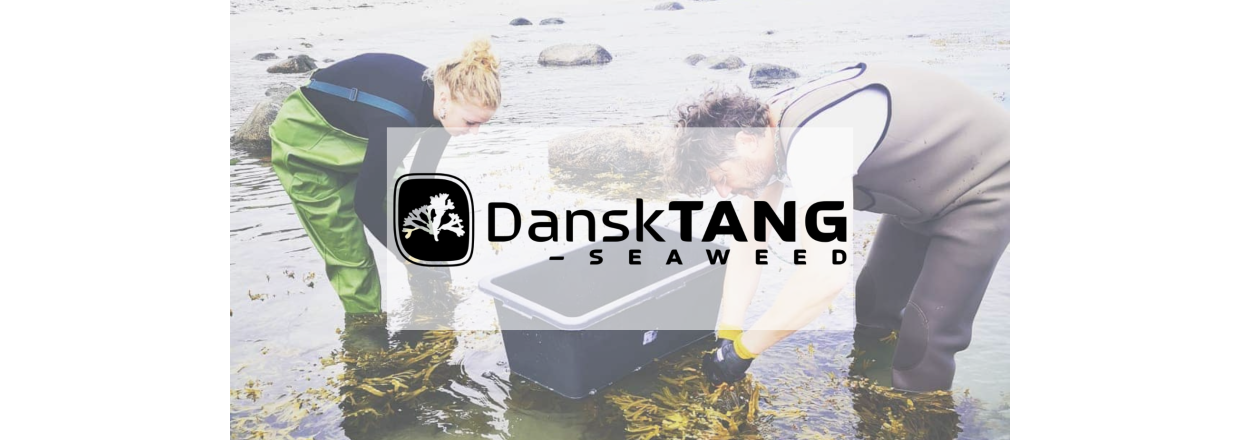
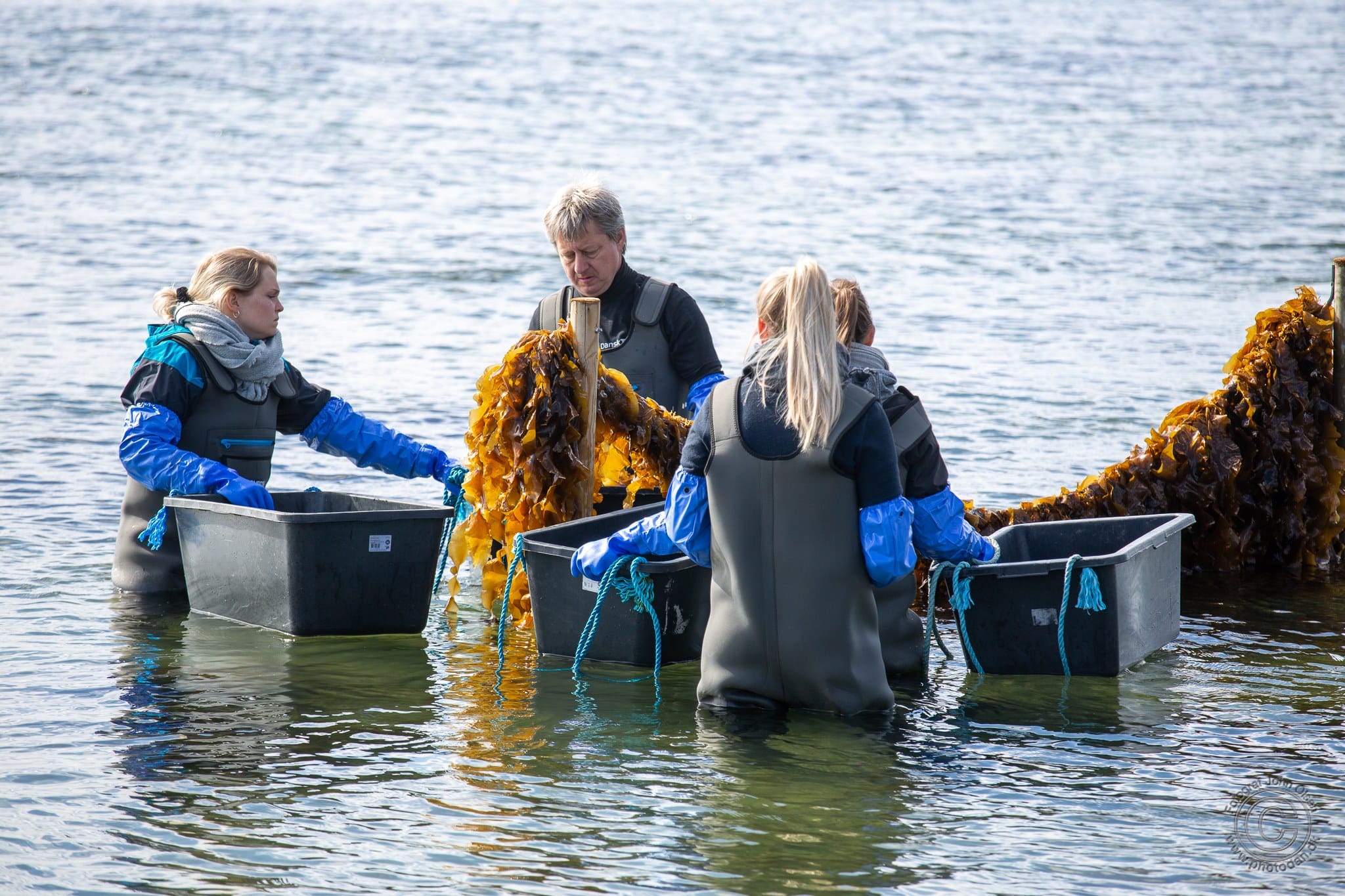
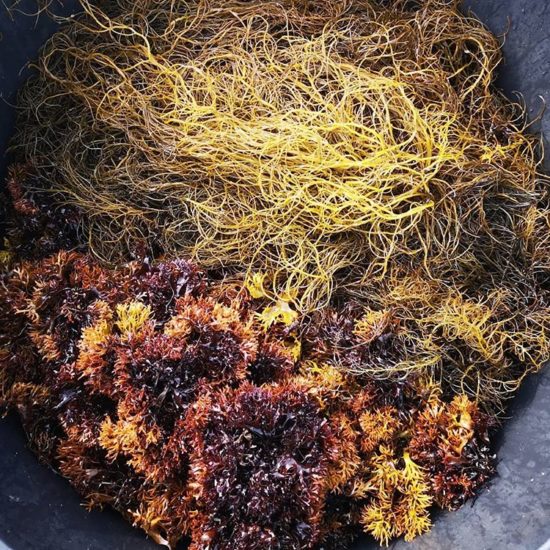

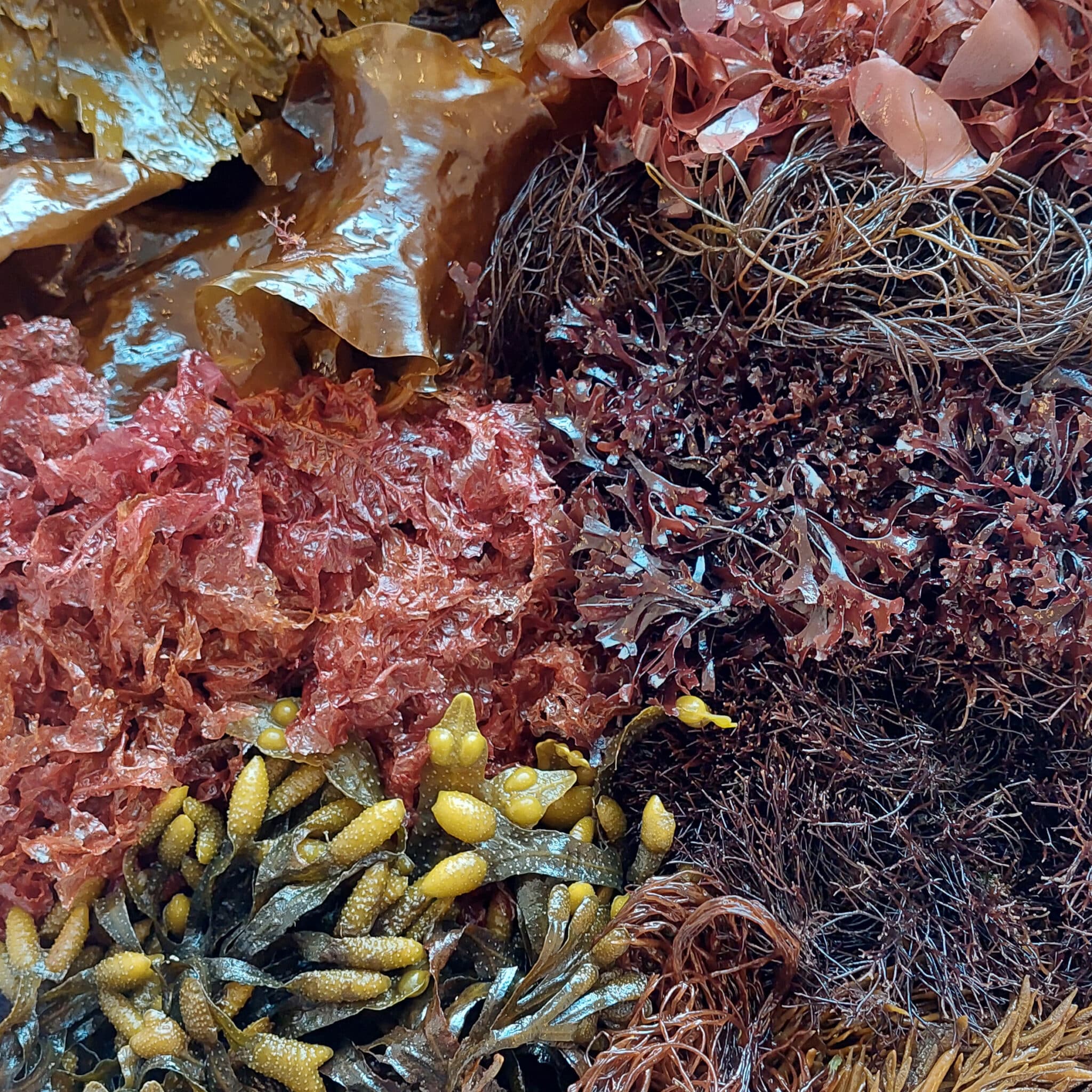
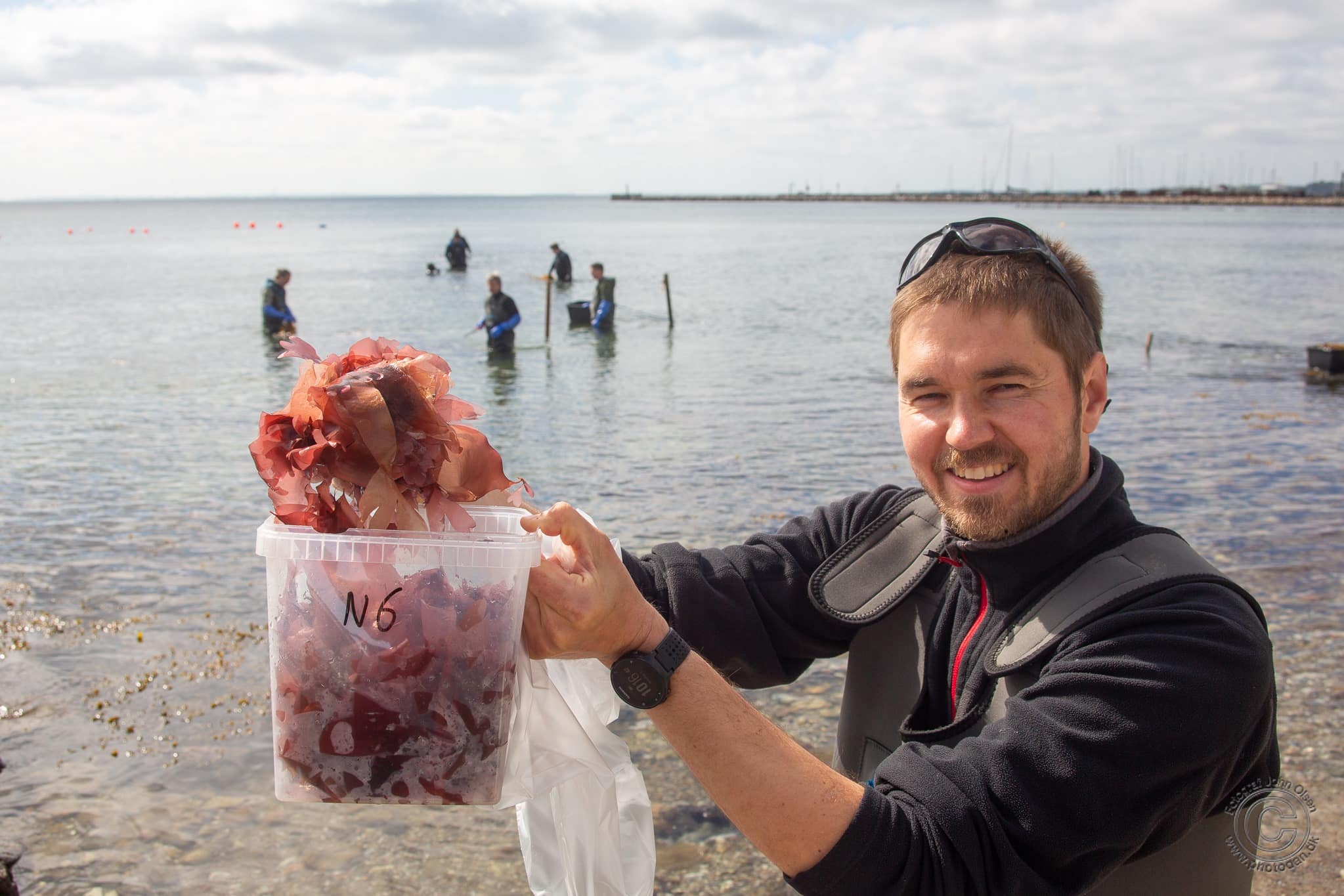
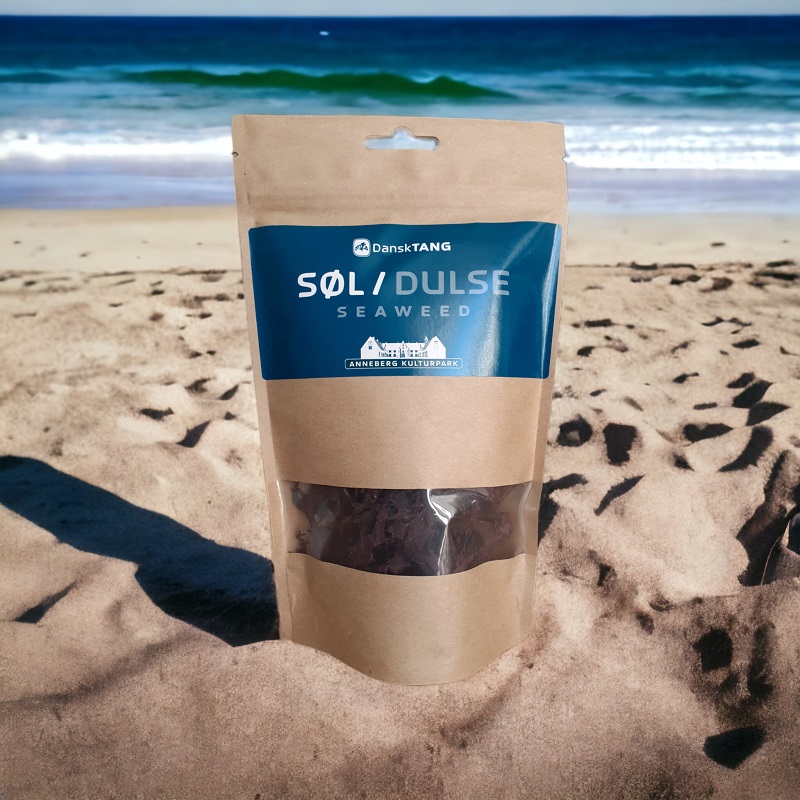
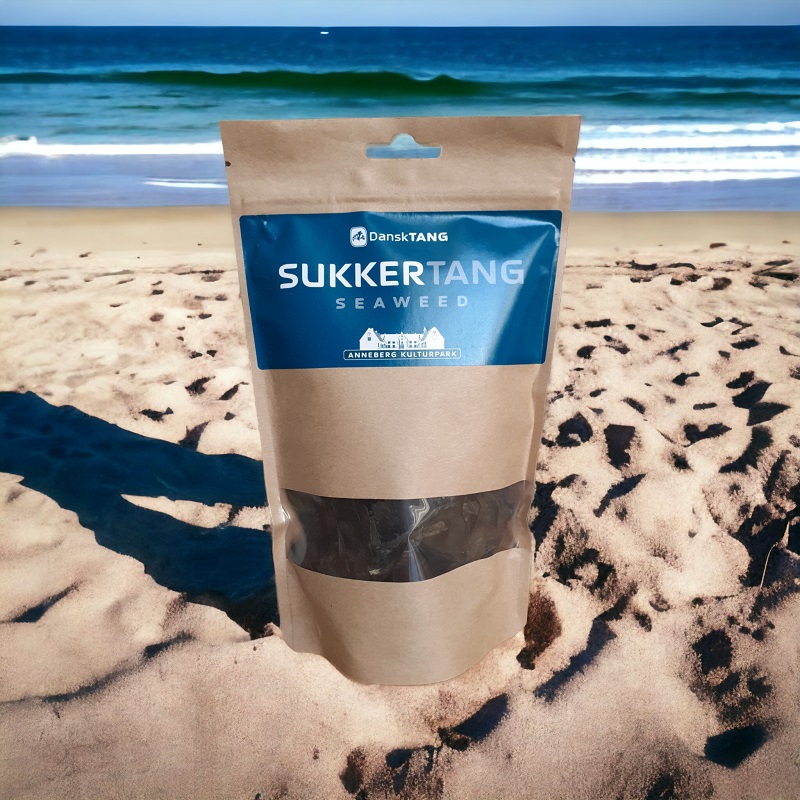
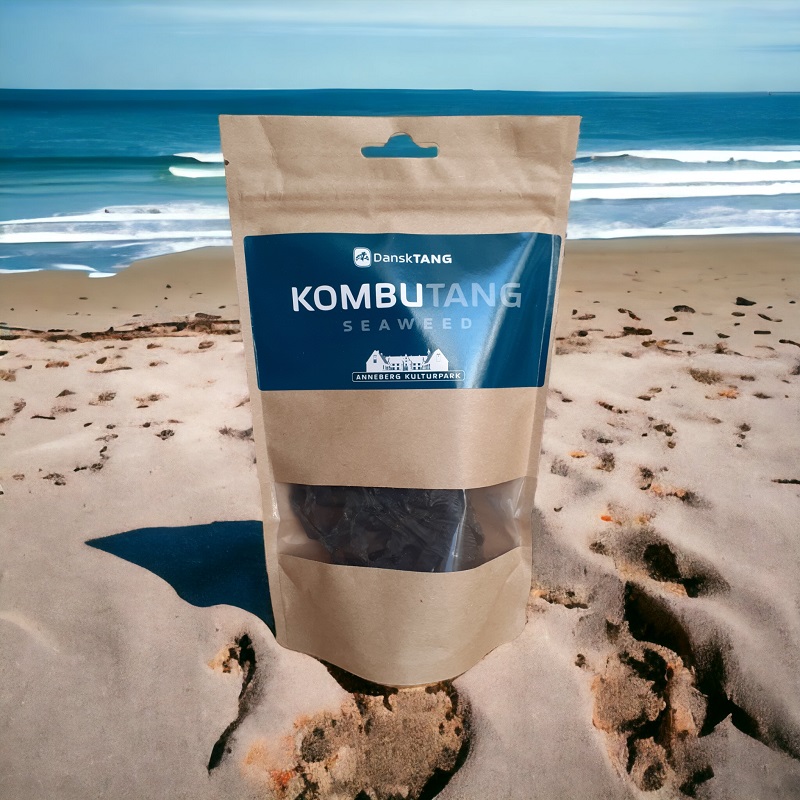
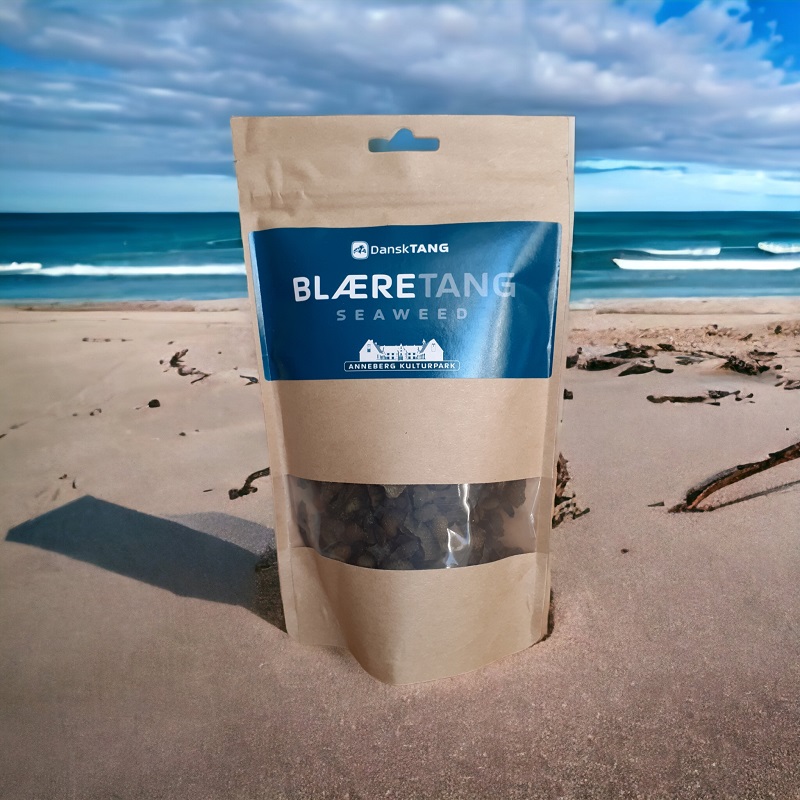
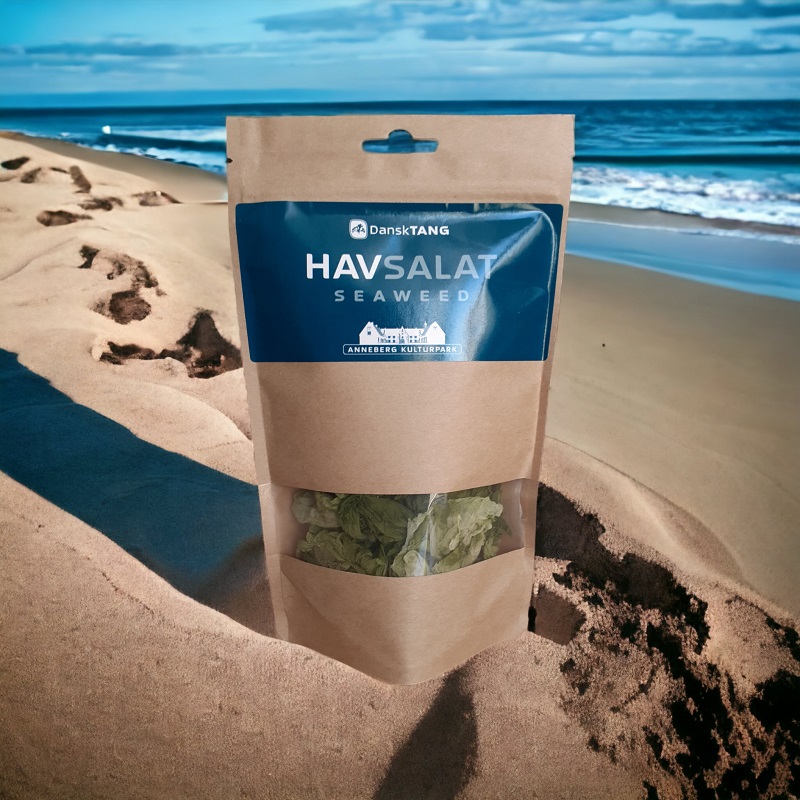
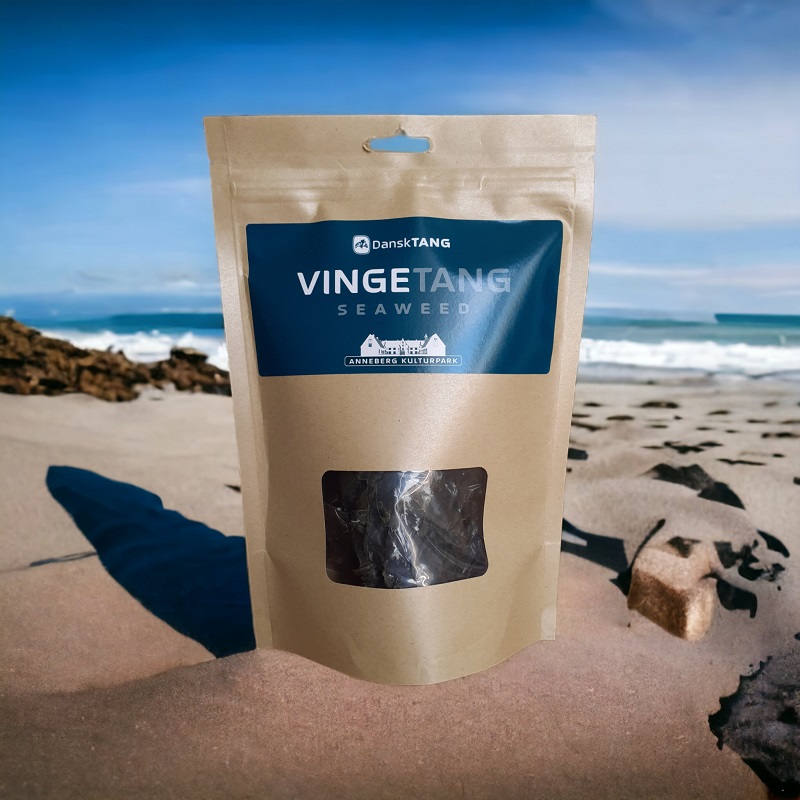
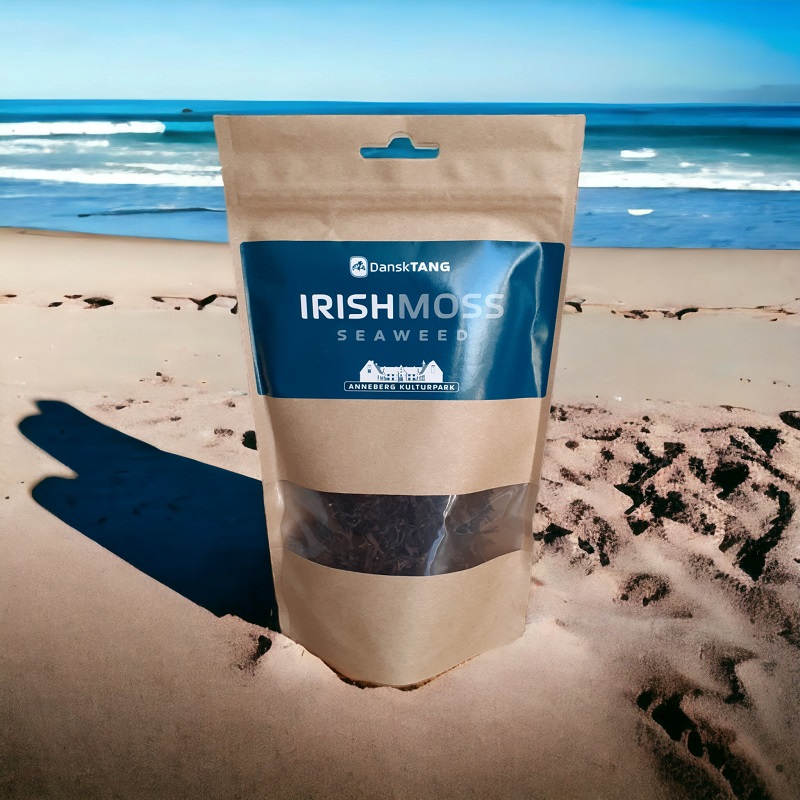
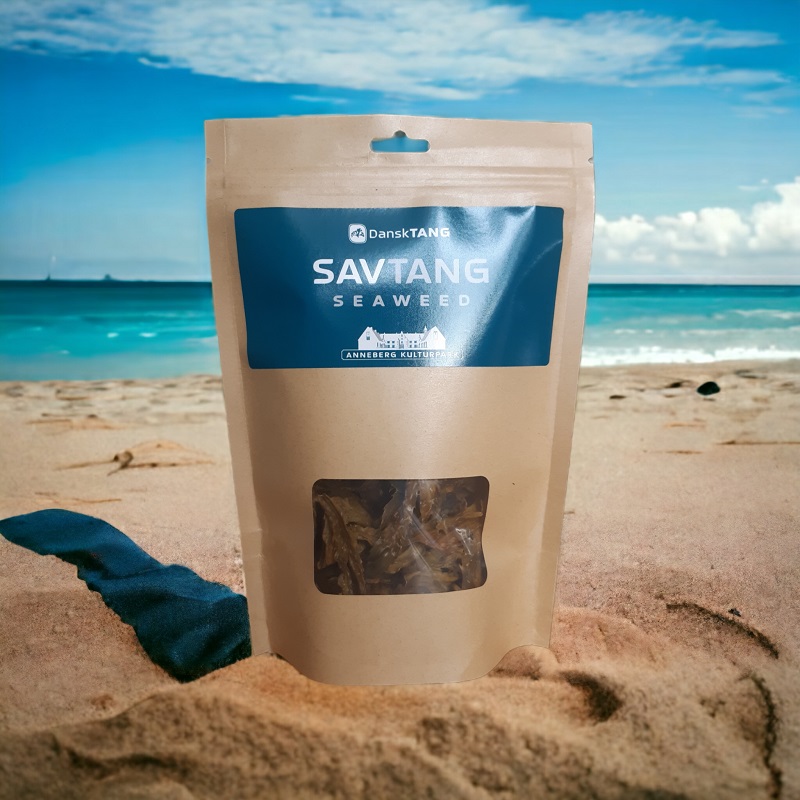
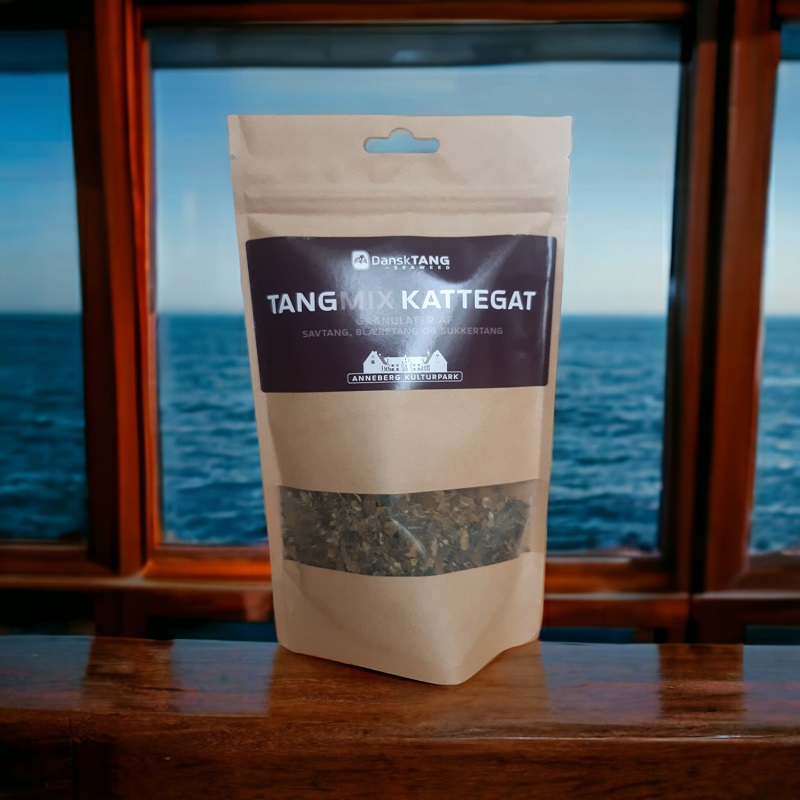
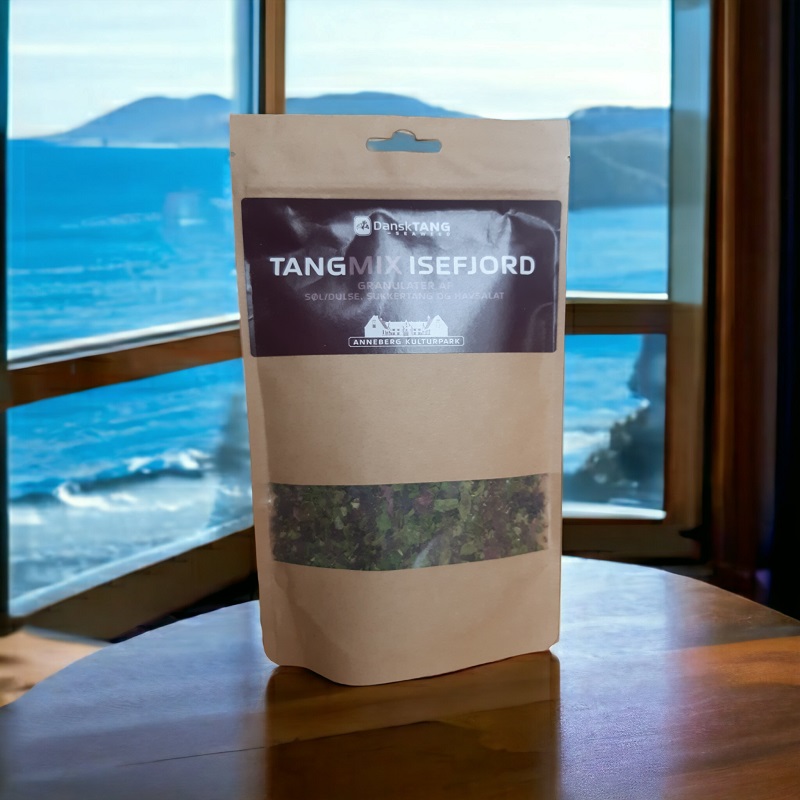
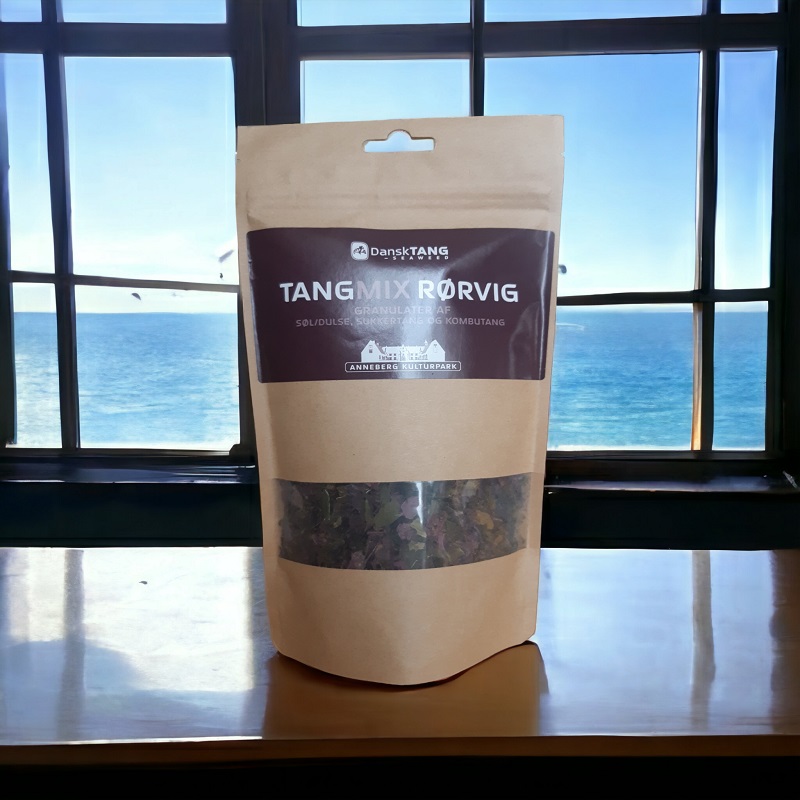
We will publicly show your name and comment on this website. Your email is to ensure that the author of this post can get back to you. We promise to keep your data safe and secure.